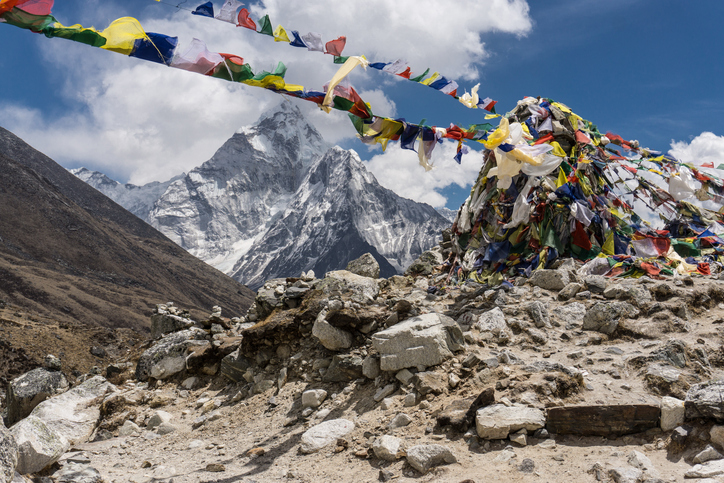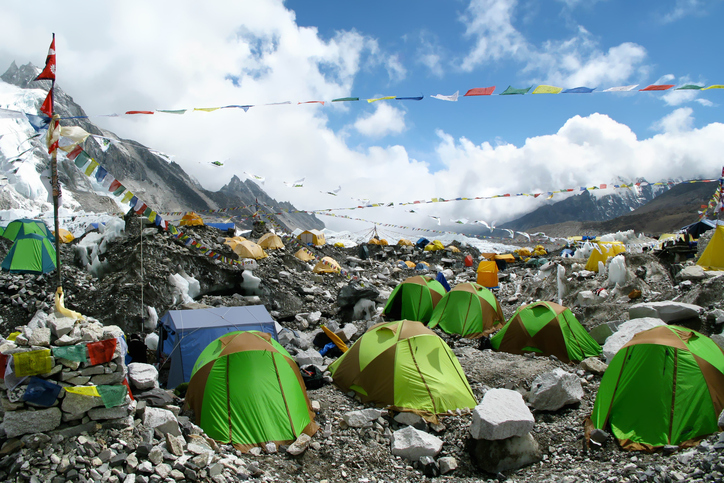
Everest Base Camp Hiking
Everest Base Camp is a term used to refer to either of the two base camps which are situated on opposite sides of Mount Everest.
Possibly because the phrase is so widely used, and because the South Base Camp in Nepal is so popular, many people believe that there is only one Everest Base Camp, but this is not true – there is also a North Base Camp on the Tibet side of the mountain.
The North Everest Base Camp is less frequently visited than the South Everest Best Camp in Nepal, the latter of which is one of the most popular trekking routes in the Himalayan mountain range and plays host to thousands of tourist trekkers every year.
What is Base Camp on Mount Everest?

Base Camp is simply anywhere a tent is pitched in anticipation of a climb up a mountain. It is the place from where mountaineering expeditions set out – but in the case of Mount Everest, when people say Base Camp they normally mean the South Base Camp at 5,364 metres in Nepal.
In actuality, any base camp set up in anticipation of a climb up Mount Everest would also be an Everest base camp, but since the two main routes up the mountain became standardised, this is much less common, and when people speak of Everest Base Camp, they are almost always talking about the South Base Camp in particular.




